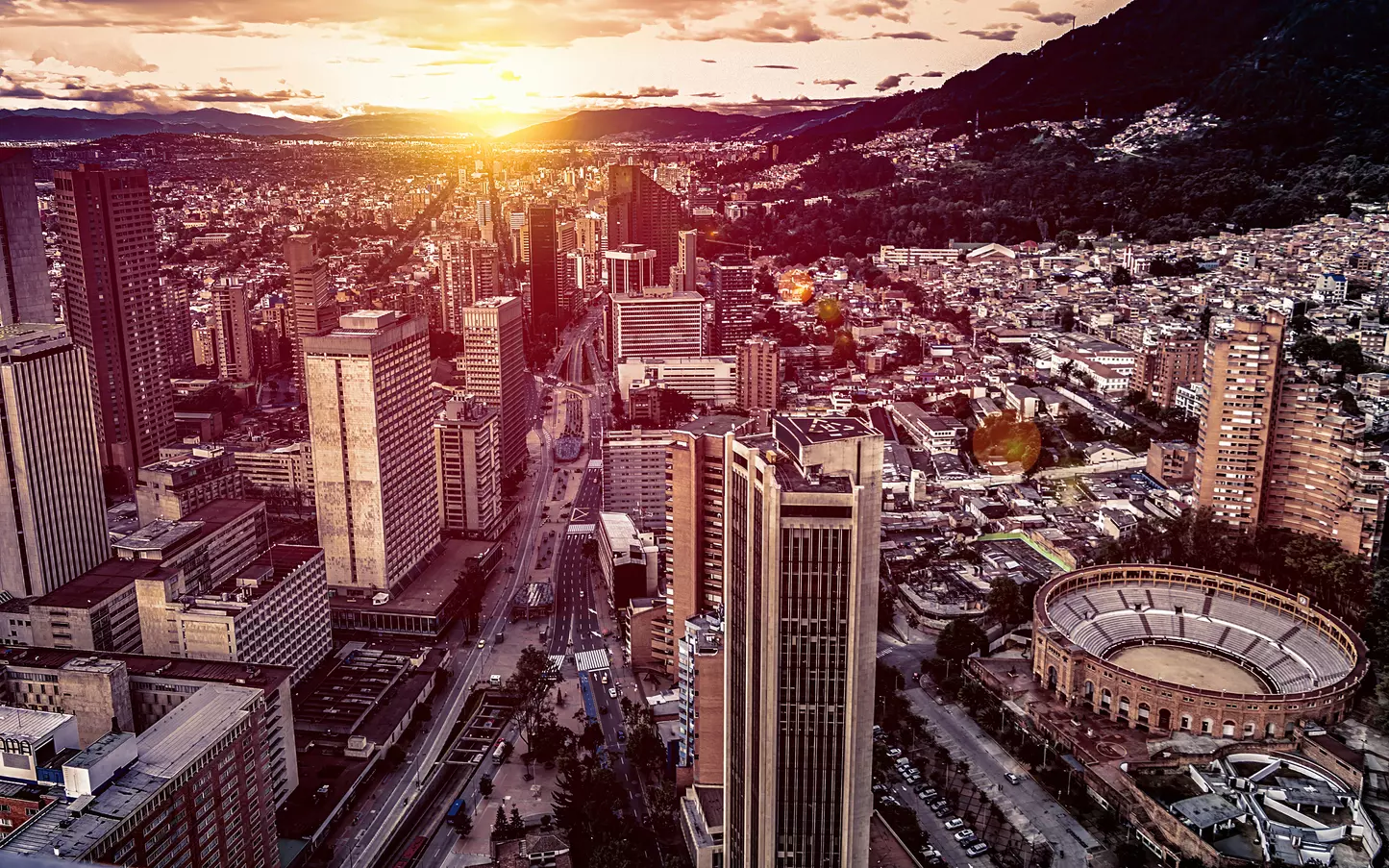In the 1990s, the rapidly growing Colombian capital of Bogotá confronted an urban mobility crisis with traffic gridlock, unsafe roads, poor air quality and dysfunctional public transport. Less than a decade later, it was the world’s first city to win the prestigious ITDP Sustainable Transport Award (STA). How did Bogotá make the leap from a mobility crisis to a globally recognized award winner?
The inception of TransMilenio
It started with a vision of a mass transit solution —and the leadership of Bogotá’s mayor, Enrique Peñalosa, who galvanized political will, government intervention and financial backing. Within three years, the vision became a reality when Bogotá launched TransMilenio, a bus rapid transit (BRT) system based on international standards and one of the largest mass transit projects in Latin America. In parallel with TransMilenio, the city developed an extensive bicycle network with more than 370 kilometers of dedicated lanes.
For the local government, TransMilenio was an ambitious step aimed at transforming the city's outmoded public transport services into a modern transit network with equal access for all social classes. Globally, TransMilenio served as a benchmark for transit innovation and was replicated in other cities worldwide.
For Bogotanos, the BRT system marked a breakthrough in the availability of urban mobility services. TransMilenio passengers quickly exceeded 800,000 daily, and by 2006, surpassed one million people per day. It became the world's first BRT system to “reach operational productivity levels equivalent to a metro system,” ultimately becoming the busiest BRT system in the world.
Further mobility improvements included an Integrated System of Public Transportation (Sistema Integrado de Transporte Publico or SITP) with a unified tariff for all public transport services, including traditional bus operators, TransMilenio, and cycling stations.
New hurdles emerging
However, Bogotá encountered new challenges from demographic trends and a growing population. A steady influx of people moving to the city from rural areas led to informal and unplanned communities with mobility needs that exceeded public transport capabilities.
The location of low-income residents on Bogotá’s periphery presented obstacles in terms of accessibility to jobs and other opportunities. Bogotá’s mobility services "failed to improve accessibility, reinforcing gaps between rich and poor." Public transport passengers complained of overcrowding and lack of security. These issues raised questions about Bogotá being the only megacity in the world without a metro system.
Despite having a long history of metro proposals, government approval was impeded by political instability, financial constraints, and disagreements regarding above-ground versus underground construction. Nonetheless, city leaders deemed a modern metro network as an essential investment in Bogotá’s urban modernization.
“The best line”
In 2017, the Colombian government finally approved a co-financing agreement for the initial phase of a metro system in Bogotá. By 2019, a contract was signed for an initial above-ground line of a new Bogotá Metro, with the aim of extending modern transit services to marginalized communities. Although the national government preferred an underground line, Bogotá’s Mayor Claudia López, kept the above-ground project moving and insisted “the best line is the one that is built; the worst is the one that is only on paper.” One of the pillars in an urban development plan proposed by Mayor López is to “make the Bogotá Region a model of multimodal, inclusive and sustainable mobility.”
In 2021, the Bogotá Metro project commenced work on an above-ground line, and in 2023, the city released a tender for a second line. According to the World Bank, the new metro will become the backbone of Bogotá’s urban transport network.
Luis A. Guzman, associate professor at the University of the Andes, says university studies demonstrate how “investments in new public transport corridors in Bogotá, particularly in the first two metro lines, significantly improve accessibility from low- and medium-income zones.”
Creative and inclusive mobility solutions
To improve accessibility for residents in the southern part of the city, Bogotá implemented TransMiCable, a cable car system designed as a complementary service to TransMilenio. With the capacity to transport 24,000 passengers daily, TransMiCable transformed the community of Ciudad Bolivar.
According to TransDev, the system operator, TransMiCable significantly improved the lives of people in Ciudad Bolivar, a community long excluded from Bogotá’s schools, jobs, health services and cultural resources, and residents now feel fully integrated into the city.
Recognized by the World Bank as a model of social transformation, TransMiCable demonstrates the importance of investing in projects with local impact. Guzman says research (to be published) indicates “this system improves accessibility levels by up to 50%” for those in served neighborhoods. “The key is that the cable car system is integrated with the city's public transport system.”
Bogotá’s quest to enhance urban mobility included:
- Improving road safety and traffic calming (resulting in a 28% decrease in traffic-related fatalities -compared to 2015-2018 average)
- Creating a Kids First mobility safety program
- Deploying a fleet of electric buses
- Developing an inclusive bikeshare system
An ongoing success
When facing threats posed by the pandemic, Bogotá adapted to unique mobility demands and emerged as one of the first cities to establish emergency bike lanes, many of which remain in use. Furthermore, street spaces were reconfigured to facilitate social distancing and some areas were pedestrianized.
It comes as no surprise that Bogotá earned its second ITDP Sustainable Transport Award in 2022, given the city’s high rate of public transport coverage, decisive response during the pandemic, and actions to deploy e-buses and improve pedestrian safety.
